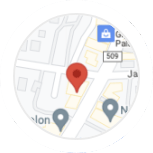BLOG
Evidence to Prove a Drowsy Driver Caused a Crash
 Most people understand the dangers of distracted or drunk driving. However, many people forget that driving while fatigued or drowsy is just as dangerous. According to the National Safety Council (NSC), drowsy driving accounts for about 100,000 crashes annually. More than 1,500 of these accidents result in at least one death.
Most people understand the dangers of distracted or drunk driving. However, many people forget that driving while fatigued or drowsy is just as dangerous. According to the National Safety Council (NSC), drowsy driving accounts for about 100,000 crashes annually. More than 1,500 of these accidents result in at least one death.
If you were injured in a crash caused by a drowsy driver, you can pursue compensation for your damages. Below, we discuss the type of evidence you can use to prove a drowsy driving accident to recover the compensation you need.
Call our New Jersey auto collision lawyers to discuss your claim. The consultation is free, and there are no upfront fees.
Photos From the Accident Scene
If you suspect the driver who crashed into you was drowsy, or fell asleep behind the wheel, there may not be any skid marks on the road.
Photos from the scene showing a lack of skid marks may help establish that the at-fault driver did not hit the brakes, thus proving he or she was asleep behind the wheel or too fatigued to step on the brakes in time.
Medical Records
According to the National Sleep Foundation, between 50 to 70 million Americans suffer from some kind of sleep disorder. These disorders include the following:
- Insomnia – being unable to fall and stay asleep
- Sleep apnea – a disorder that causes someone to stop and start breathing repeatedly while sleeping
- Restless leg syndrome – a tingling or prickly sensation in one’s legs, along with a powerful urge to move them
- Hypersomnia/narcolepsy – being unable to stay awake during the day
- Circadian rhythm disorders – being unable to sleep or stay awake at the right times
- Parasomnia – acting unusual while sleeping, such as sleepwalking or talking
Your attorney may be able to subpoena the medical records of the at-fault driver to prove he or she suffers from a sleep disorder, which may have led to the person getting behind the wheel while drowsy.
Records of prescription medication may also help prove someone was drowsy. He or she may have a medical condition that requires medication that causes drowsiness.
People who suffer from a sleep disorder or take prescription medication should not operate a vehicle without consulting a medical professional. Therefore, if the person does so and causes a crash, he or she may be liable for damages.
Employment Records
People may work at all hours of the day and night. Studies show that shift workers, especially those on a night shift, are six times more likely to be involved in a fatigue-caused collision.
If you are involved in an accident with one of these shift workers, you may be able to obtain his or her employment records to show the late hours he or she was working before the collision.
Bank Records and Social Media History
Young people aged 16 to 29, especially males, tend to get less sleep than the average person. This could mostly be attributed to social engagements, as this demographic is likely to stay out later with friends. Alcohol is also a big contributor to fatigued driving, and younger people are more likely to drink and drive.
A driver’s bank records could also be subpoenaed to determine how late he or she was purchasing things before getting behind the wheel. His or her social media history and cellphone activity may also help establish whether the driver was out late.
Witness Testimony
Testimony from an objective third party is generally a valuable piece of evidence in an accident case. This is especially true in cases when proving someone was doing something before a crash is so difficult.
An eyewitness may be able to testify whether he or she saw another driver nodding off or asleep behind the wheel. The eyewitness may have also observed the vehicle drifting to the side of the road, as this could imply the driver was not paying attention to the road.
Event Data Recorder in the Vehicle
An event data recorder (EDR) captures all the information about a vehicle, including:
- Braking
- Speeds
- Lane changes
- Blinker usage
This data is valuable when trying to prove someone was drowsy or fell asleep behind the wheel because it can show whether the driver reacted appropriately to a situation. For example, EDR data may show if the driver failed to step on the brakes when approaching another vehicle.
Getting the information from the at-fault driver’s EDR is only possible if he or she willingly hands it over or if your attorney subpoenas it in a lawsuit.
We Can Help. Call Today
Proving that a drowsy driver caused an accident is difficult. There must be a thorough investigation and getting some of the necessary records to prove fault might not be possible without filing a lawsuit. Therefore, it may be in your best interest to work with an attorney.
At the Lynch Law Firm, PC, our attorneys have helped injured victims for decades. We offer a free consultation to discuss your claim. There are no upfront fees, and you do not pay us unless we recover compensation for you.
Call (800) 518-0508 to schedule your confidential consultation.










